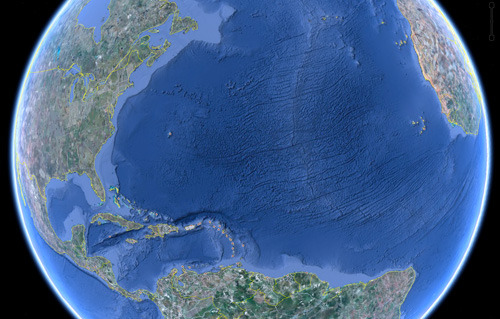Under The Sea
I wrote about my excitement over the rumor that Google was going under back in April, but now it has officially happened — the Ocean has arrived as part of Google Earth:
Look at those trenches! And now you can use the Google Earth software to fly through the area in the middle of the Atlantic where some god has decided to begin peeling the globe like an orange.
I’m waiting for the day (presumably a few years from now) that this feature includes other major bodies of water, revealing the hidden shapes beneath the surface of lakes or rivers that you know well from above. The physical relief version, that is. I’ll pass on the underwater Google Street View with their privacy-invading minisubs sticking their nose in everyone’s business.


